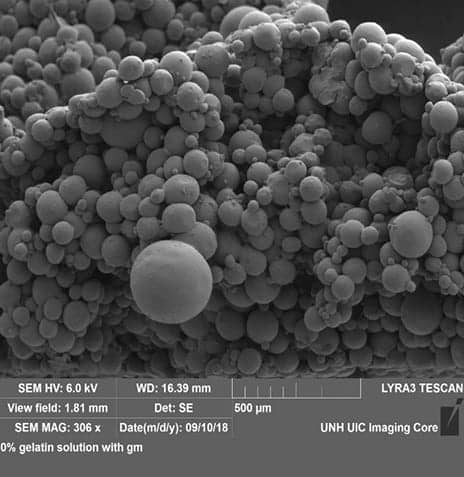
Pictured here is an electron microscope image of the porous hydrogel created by University of New Hampshire researchers. (Image courtesy of the University of New Hampshire)
Researchers at the University of New Hampshire report that they have created an easy-to-make, low-cost injectable hydrogel formulated to help wounds heal faster, especially for patients with compromised health issues, they suggest.
“While valuable for helping patients, current hydrogels have limited clinical efficacy,” says Kyung Jae Jeong, assistant professor of chemical engineering at UNH, in a media release. “We discovered a simple solution to make the hydrogels more porous and therefore help to speed up the healing.”
In the study, recently published in the journal of ACS Applied Bio Materials, the researchers outline how they made a macroporous hydrogel by combining readily available gelatin microgels – hydrogels that are a few hundred microns in diameter – with an inexpensive enzyme called microbial transglutaminase (mTG). Gelatin was used because it is a natural protein derived from collagen, a protein found in connective tissue in the body such as skin.
Assembling these tiny microgels with mTG helped create a hydrogel with large enough pores for the neighboring cells to move into the wound for repair. In addition, this new injectable formulation allows for the slow release of protein drugs to aid wound healing, such as platelet-derived growth factor (PDGF). The researchers compared conventional nonporous hydrogels with the new macroporous hydrogels, and found a notable increase in the migration of tissue cells inside the hydrogel, which is the hallmark of wound healing, the release explains.
Along with diabetic ulcers, the macroporous hydrogel could help with other forms of healing on the skin, cornea, internal organs during surgery, and even has military implications, according to the researchers.
[Source(s): University of New Hampshire, EurekAlert]




